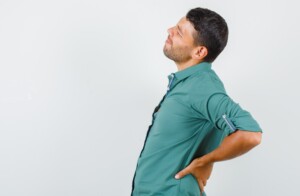There’s been a noticeable and steady rise in how many older Americans are using mobility aids.
We’re talking canes, walkers, wheelchairs and scooters.
Usage has gone up by roughly 50 percent, which is a pretty big jump compared to earlier years.
Falls are the leading cause of injury related death among people 65 and older.
A large national survey (Gell et al, Journal of the American Geriatrics Society) of adults over 65 found that about a quarter of them used some kind of mobility device within the previous month.
And within that group, almost 10 percent were using more than one type of device.
The most common devices were canes and walkers.
Wheelchairs and scooters were less common but still represented a solid portion of users.
- Not surprisingly, device use increased with age.
- Women were more likely than men to use mobility aids.
- Higher usage also showed up among people with less education, more health conditions and obesity.
One of the biggest takeaways from the study was that a mobility device was not linked to more falls.
There was one interesting nuance, though. People who used only a cane tended to report more worry about falling.
That worry sometimes led them to limit their activities.
So the emotional and behavioral side of the equation still matters, even when the device itself isn’t causing additional falls.
Why is the rise in mobility aids exponential?
Are more seniors using these aids because they’re living longer with more mobility issues?
Are walking aids simply more socially acceptable now – even fashionable?
Is it because percentage-wise in the population, more people over 65 are obese?
Or are people gaining easier access to them? Though this idea seems flimsy when you consider that drug stores sell walkers and canes.
The research suggests that the increase probably relates to a mix of deeper physical issues — like balance trouble, reduced strength, chronic health conditions and cognitive changes — combined with environmental and social factors.
This means that while the devices themselves matter, they’re only part of the story.
If someone starts using a cane because their balance is deteriorating, the cane may help in the moment, but it doesn’t fix the underlying issue.
Some people will jump on board with cane use, entirely skipping the concept of “Let’s see if we can restore my balance with physical therapy and exercise.”
Others would be 100% unaccepting of the idea of cane use, and would valiantly partake in any kind of therapy to restore balance.
The study also emphasized the importance of staying active.
In some areas, older adults who are more active do report more falls.
But the researchers still believe that staying active is better than becoming sedentary.
Activity supports strength, confidence and overall mobility.
For cane users who cut back on activity because they fear falling, the concern is less about the cane and more about the negative effects of inactivity.
If someone feels insecure using a cane, it may be worth looking into a different type of device or getting proper training to use the current one safely.
![]()










































